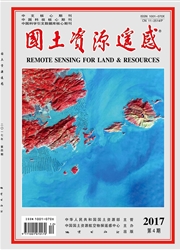

 中文摘要:
中文摘要:
利用MODIS数据产品MODllA2、MODl3A1和MCD43A3获取NDVI、ATI(表观热惯量)和TVI(温度植被指数)等参数,以NDVI作为判别阈值将ATI和TVl进行组合建立土壤含水量反演模型,并用预留的实地采样数据对模型进行了验证。最后,结合DEM数据进一步分析了石羊河流域土壤含水量的空间分异规律,结果表明:该方法可实现ATI和TvI方法的优势互补,提高反演精度;研究区土壤含水量从上、中至下游呈现3个依次递减的阶梯,且随高程、坡向及坡度等地形因子的变化呈明显的分异规律。
 英文摘要:
英文摘要:
This paper intends to examine spatial distribution of soil moisture in Shiyang River basin in eastern Hexi corridor, an important arid ecosystem in Northwest China. The MODIS data MOD11A2, MOD13A1 and MCIM3A3 were used to compute such parameters as NDVI, ATI and TVI required for the study. An applicable approach from ATI and TVI has been proposed to estimate the soil moisture in the basin, using NDVI as a threshold for each pixel. The approach was validated with the field data. The distribution pattern of the soil moisture in Shiyang River basin was further analyzed using DEM data. The results show that the compound ATI and TVI models can effectively improve retrieval accuracy and remedy the shortage of one-sided method. The results were acceptable through a comparison with the field data. The study reveals that in Shiyang River basin, the soil moisture is degressive from the upstream area to downstream area, and it is obviously lower in the sloping land of foothills, the edge of oasis and desert area. Relatively, the soil moisture has observably changed in the upstream and downstream areas and marginal areas of oasis. In Shiyang River basin, the soil moisture distribution shows significant differentiation with the change of elevation, slope and other terrain factors. In Shiyang River basin, the drought is mainly distributed in farmland and grassland, and the drought extent of farmland is in different degrees of seriousness in different landuse types.
 同期刊论文项目
同期刊论文项目
 同项目期刊论文
同项目期刊论文
 期刊信息
期刊信息
